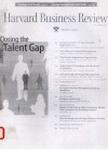版权所有:内蒙古大学图书馆 技术提供:维普资讯• 智图
内蒙古自治区呼和浩特市赛罕区大学西街235号 邮编: 010021

作者机构:McKinsey & Co Washington DC USA McKinsey Pittsburgh PA USA McKinsey Atlanta GA USA
出 版 物:《HARVARD BUSINESS REVIEW》 (Harv Bus Rev)
年 卷 期:1997年第75卷第6期
页 面:66-+页
核心收录:
学科分类:0202[经济学-应用经济学] 02[经济学] 1202[管理学-工商管理] 1201[管理学-管理科学与工程(可授管理学、工学学位)]
摘 要:At the heart of the traditional approach to strategy Lies the assumption that by applying a set of powerful analytic tools, executives can predict the future of any business accurately enough to allow them to choose a clear strategic direction. But what happens when the environment is so uncertain that no amount of analysis will allow us to predict the future! What makes for a good strategy in highly uncertain business environments? The authors, consultants at McKinsey & Company, argue that uncertainty requires a new way of thinking about strategy. AU too often, they say, executives take a binary view: either they underestimate uncertainty to come up with the forecasts required by their companies planning or capital-budging processes, or they overestimate it, abandon all analysis, and go with their gut instinct. The authors outline a new approach that begins by making a crucial distinction among four discrete levels of uncertainty that any company might face. They then explain how a set of generic strategies-shaping the market, adapting to it, or reserving the right to play at a later time - can be used in each of the four levels. And they illustrate how these strategies can be implemented through a combination of three basic types of actions: big bets, options, and no-regrets moves. The framework can help managers determine which analytic tools can inform decision making under uncertainty - and which cannot. At a broader level, it offers executives a discipline for thinking rigorously and systematically about uncertainty and its implications for strategy.